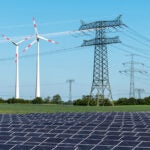Every company invested in our nation’s clean energy transition is aware that 2019 is the last year that solar energy can take advantage of the 30% Investment Tax Credit (ITC) under Internal Revenue Code Section 48.
However, the imminent ITC phaseout may be the first time some are grappling with the safe harbor rules for beginning construction. Solar developers should be wary of the reduction in ITC after this year, which drops to 26% in 2020, 22% in 2021, and 10% in 2022 and beyond, and should take time now to consider the options for their planned projects.
If this year is the first time you’ve had to worry about safe harbors and beginning construction, just ask someone in wind. They’ve been doing it for a while. The American Recovery and Reinvestment Act of 2009 brought the 1603 grants allowing renewable energy projects to select a 30% cash grant in lieu of the ITC, or the Production Tax Credit (PTC).
That initial program had a Dec. 31, 2011, deadline to begin construction, and with the promise of a 30% cash rebate on costs, interest in qualifying before the deadline was immense. The PTC has since been a mainstay of the wind industry, and meeting the year-end construction deadline has been a near-annual goal for wind developers, with 2019 being the third and last year of the PTC phaseout.
There are ample opportunities to maximize the value of the ITC over the next few years if you understand the rules and plan properly. As we enter the second half of 2019, now is the time to execute a strategy for maximizing the value of project costs. With careful planning, you can ensure what you spend will count toward the ITC safe harbor, and you won’t spend money on things that will not.
Physical Work Test vs. Five Percent Safe Harbor
Of the two methods for satisfying the deadline for beginning construction—the Physical Work Test and the Five Percent Safe Harbor—the latter typically provides the most flexibility. The Physical Work Test requires physical work of a significant nature, on- or off-site, but does not include preliminary activities nor the manufacture of goods normally held in inventory by the vendor. The Five Percent Safe Harbor, however, counts all expenses includable in the depreciable basis of the property. Because upfront costs prior to commencing construction will normally exceed 5% of the total energy property cost, it is important to focus on the rules for maximizing use of the safe harbor.
To establish a start date, the Five Percent Safe Harbor requires only that the “taxpayer pays or incurs five percent or more of the total cost of the energy property and thereafter makes continuous efforts to advance towards completion” (IRS Notice 2018-59). For those using a cash basis method of accounting, the expenses apply as they are paid. However, for the accrual method, expenses are not counted until they are incurred, which requires a nuanced analysis. “A liability is incurred … in the taxable year in which [1] all the events have occurred that establish the fact of the liability, [2] the amount of the liability can be determined with reasonable accuracy, and [3] economic performance has occurred with respect to the liability” (Treas. Reg.§1.461-1(a)(2)(i)).
A properly drafted binding written contract will satisfy the first two prongs of the test, sometimes referred to as the “all events test.” The third prong, economic performance, occurs as goods or services are provided to the taxpayer, normally when title passes. However, property (or services) may be treated as provided “if the taxpayer can reasonably expect the person to provide the services or property within 3½ months after the date of payment” (Treas. Reg.§1.461-4(d)(6)(ii)). Delivery or the passing of title need not mean physical possession by the taxpayer if the contract provides for passing of title sooner than delivery onsite.
You’ve Met Safe Harbor; What’s Next?
The taxpayer must make continuous efforts to complete the project after beginning construction. The guidance allows for a continuity safe harbor, whereby a project completed within four years of the end of the calendar year in which construction began will be deemed to meet the continuity test. However, the continuity safe harbor will not save a project from the placed-in-service deadline of January 1, 2024, after which any project will be subject to the permanent 10% solar ITC, regardless of when construction began.
There are current proposals in Congress to expand and extend the ITC, though those are uncertain. Solar developers have two years and thus two chances to “practice” before the hard phaseout when the credit drops to 10% after 2021. Your ability to incur expenses in calendar year 2021 may depend on how well you planned in 2019. During the era of the ever-expiring PTC, many wind developers made hay by carefully allocating turbines purchased in a prior year to ensure any project could qualify under the safe harbor. Take a lesson from wind: plan ahead, and make hay (and solar!) while the sun shines. ■
—Tyler N. Ballew is a business lawyer at Sherin and Lodgen LLP, concentrating his practice in renewable energy. He has a background in wind turbine manufacturing and project development.









